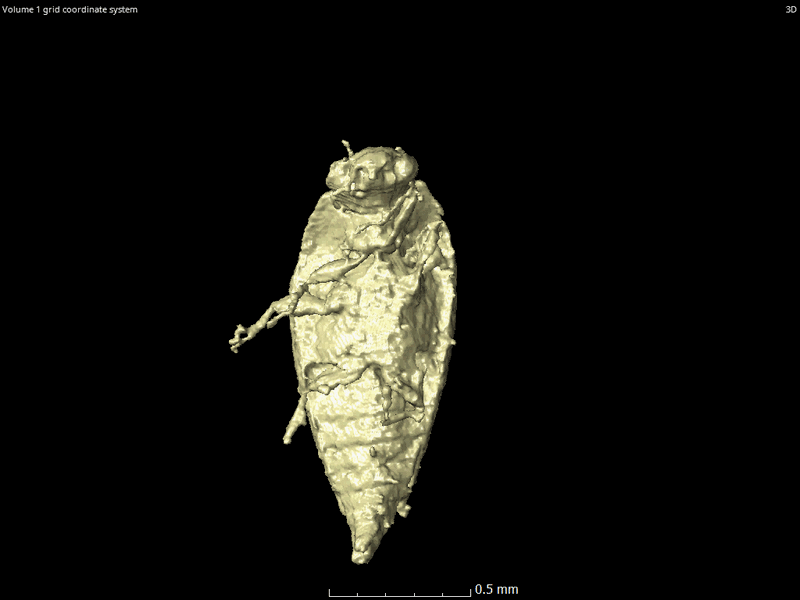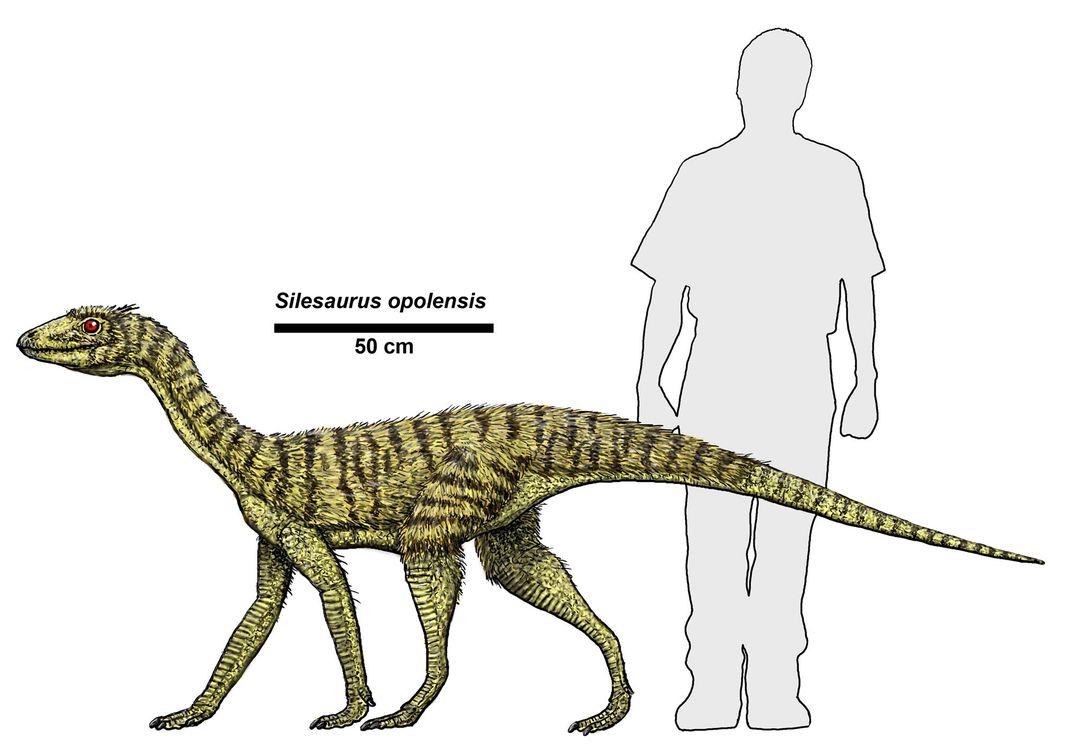New Species of Beetle Found in 230-Million-Year-Old Feces
The insect is older than any amber-encased specimen, and may inspire scientists to look for more insects in fossilized dung
/https://tf-cmsv2-smithsonianmag-media.s3.amazonaws.com/filer/14/25/1425eb4c-95f2-4ad4-82a1-f2be89ff73f6/triamyxa-coprolithica-anterior-view-credit-qvarnstrom-et-al_web.jpg)
Several years ago, a group of researchers found fossilized poop, known as a coprolite, in the village of Krasiejów, Poland. Naturally, they decided to scan it using powerful X-rays. Preserved inside were several of the first ever fully intact beetles discovered in a coprolite.
These tiny bugs, about half-an-inch long, had fragile features such as antennae and legs exquisitely preserved. “We were like, ’wow’,” says Martin Qvarnström, whose team first saw the scans of a fully intact beetle in late 2019. “It was looking right back at us from the screen.”
The researchers found that the coprolite fragment dates back to the Triassic period of 230 million years ago and that the insect inside represents a new species. The results of this study, published today in Current Biology, showcase the scientific potential of coprolites as time capsules of how ancient insects lived.
“This is not an amber, and yet it's a spectacular preservation,” says Paul Sereno, a paleontologist at the University of Chicago who wasn’t involved in the study. (At the time the coprolite was still fresh poo, sap-producing trees that provide specimens in amber didn’t yet exist.) Sereno calls the level of insect detail captured in the coprolite “really delicate—unbelievable.”
The coprolite fragment was a stubby cylinder, about the size of ten quarters stacked together. The coprolite’s width and shape led the researchers to identify a suspected source: the 33-pound, ancient reptile Silesaurus opolensis, which also lived in the area during the Triassic. The Silesaurus sported a beak, which the researchers guessed was used to peck its insect prey off the ground. Inside the rocky shard were the imprints of fungi or algae and a jumble of different beetles, but only one type of beetle remained fully intact, likely due to its smaller size.
Qvarnström, a vertebrate paleontologist at Uppsala University, Sweden didn’t recognize the beetles. So, he reached out to an insect expert with paleontology experience: Martin Fikáček, an entomologist at National Sun-Yat Sen University, Taiwan, who then worked at Charles University in the Czech Republic.
Fikáček remembers receiving Qvarnström’s collaboration request in May 2020 among the slew of others flooding his inbox. Fikáček was initially skeptical of Qvarnström’s suggestion that the coprolite preserved enough fine details to render the beetle species identifiable, but the attached coprolite scans were too remarkable to pass up. To identify the beetle, he compared the scans to modern day analogs. He spent several weeks combing through specimens in the National Museum of Prague to pinpoint the modern descendants. Though he had scans of the fully intact beetles, Fikáček also digitally assembled scanned beetle fragments from the same species together like a jigsaw puzzle to scrutinize each physical feature. Eventually, Fikáček convinced himself what he was looking at: an entirely new but extinct species of beetle. Fikáček placed the beetle within the Myxophaga suborder, several evolutionary branches removed from its Myxophaga cousins that exist today.
“They have a very similar body form and adaptation, so they probably lived in a very similar way,” says Fikáček.

Myxophaga beetles squat in damp habitats, such as on algae or fungi-covered rocks. The researchers believed that their mystery beetle probably lived in similar conditions. Fikáček christened this beetle Triamyx coprolithica: Tria for the Triassic period from when it lived, myx for its Myxophaga association; coprolithica for its being the very first beetle to be described from coprolites.
While he’s fully sold on the beetle identifications, Sereno says he harbors several reservations on their connection with Silesaurus, which he calls a big leap. Ideally, he would have liked to see the researchers link Silesaurus’s build to its diet of insects. “Of course I would love to see the coprolite found next to bones, or somehow affiliated physically with this dinosaur, but unfortunately we don't have that.” Silesaurus fossils are fairly rare, which reduces scientists’ chances of finding this kind of evidence.

Qvarnström and Fikáček hope that their results will fuel more X-ray studies of coprolites. Besides their long history preceding amber’s existence, coprolites have other advantages as fossils. Beetles without poop protection fossilize squished; coprolites can preserve beetles in 3-D. Moreover, coprolites not only shed light on the consumed, but also the consumer that excretes the poop.
“Coprolites are in a very important part of our understanding of ecosystems of the past,” says Conrad Labandeira, a paleoecologist at the Smithsonian’s National Museum of Natural History, who didn’t participate in the study. “They give us types of data such as diet, such as micro habitats, that are not obtainable by just looking at the skeletons of animals.”
It may come as a surprise that feces fossilize well, but Qvarnström says the sheer volume of poop generated makes coprolites a promising fossil candidate to study insects. After all, dung has existed as long as the animals have excreted. The researchers’ coprolite provides a valuable snapshot of what Silesaurus ate, and how. This single mundane act of its feeding has led to the textbook testimony of all scientists know about Triamyxa so far.
The researchers can’t help but imagine the momentous episode of the Silesaurus and Triamyxa in action. They say that before dinosaurs ruled the planet, a constellation of Triamyxa up to 50 strong likely dotted a clump of moist algae or fungi. Along came a Silesaurus in search of its next meal. It was probably preying after a larger insect, but Silesaurus was a sloppy eater, so it imbibed the Triamyxa cluster as bycatch. The bugs would live out their final moments in Silesaurus’s gut, pop out in poop and be exposed 230 million years later in the paleontology labs at Uppsala University.
“This is really a look back in time,” says Sereno. He adds that thanks to modern technology, “we are in this renaissance of understanding things from the past.”
/https://tf-cmsv2-smithsonianmag-media.s3.amazonaws.com/accounts/headshot/kim.png)


/https://tf-cmsv2-smithsonianmag-media.s3.amazonaws.com/accounts/headshot/kim.png)